Upgrading or Downsizing? We’re here to help.
Change is inevitable, and often big life changes require a change in living situation.
Whether it’s a growing family, a change in career, or you just need a change of scenery, we can help you through the process of buying your next home.
Factors to consider when upgrading or downsizing
Buying property when you already own a home can be tricky to navigate. There are several factors to consider. Do you need to sell first? How does it work if you buy & sell at the same time? What happens if you buy before selling? Can you afford to keep both properties?
These are all difficult questions to answer, which depend on a number of factors including your personal circumstance, the current property market and the banks appetite for lending at the time. We can talk you through all of these scenarios and work out which is best for you.
In the meantime, read below to find out some of the terms which are important to know and understand through the process.
Contemporaneous Settlement
This is the term for when you buy and sell on the same day. This is really a dream scenario, because it means you don’t have a period of paying for 2 mortgages, and you don’t have a period between settlements where you have to find temporary accommodation and storage for your contents.
If you settle contemporaneously, you have the option of transferring your existing fixed loans, without paying break costs etc. which keeps the process nice and simple.
Bridging Loan
If you buy before you have sold your house, the bank may approve a temporary loan to cover both properties. If you have already have a sale agreed to, with a settlement date set, this is called a Closed Bridge, and is usually pretty easy to do.
If you intend to sell, but no agreement has been signed, this is called an Open Bridge. The bank will only agree to this if you can afford to cover both loans long-term. If you cannot afford an Open Bridge, we may have alternative options through our Specialist Lending team.
Break Costs
Also known as an ERR. If you can’t settle contemporaneously, or if you want to restructure the lending you may have to pay a break fee. Each bank has a slightly different calculation for this, and if rates are dropping this can be quite expensive. It is important to get an indication of these costs before settlement date.
Our Process

Initial Conversation
The initial conversation is where we get to know you. Who you are, what your goals are and how we can help. By the end of this meeting you should have a clear idea of what our plan is and how we are able to assist you.

Information Gathering
This is where we flesh out the details from our first conversation, you will complete a Fact Find and Statement of Position and provide all the supporting documentation necessary, we will compile this into a clear loan application.

Approach Lenders
We then submit this application to the bank on your behalf and work through any issues until we have an approval. If there are any conditions on this approval, we will work with you to have them satisfied so that you can purchase unconditionally.

Structure and Rates
This is where we negotiate interest rates on your behalf, then assist you in deciding how you will structure your lending. The correct loan structure can save you thousands of dollars over the life of the loan, so we take this meeting very seriously.

Ongoing Service
Our commitment to you does not end when your loan is settled. We will be here to look after your financial needs for the rest of your life. We will assist you when your interest rates need to be re-fixed, or if you have a change of circumstance.

